Dog owners often observe the unique physical traits of their canine companions, and one such feature that might pique curiosity is the presence of ridges on a dog’s lips. These ridges, though seemingly minor details, play a significant role in a dog’s daily life. Functionally, the ridges on a dog’s lips are essential as they provide multiple benefits in terms of health and efficiency during feeding and drinking.
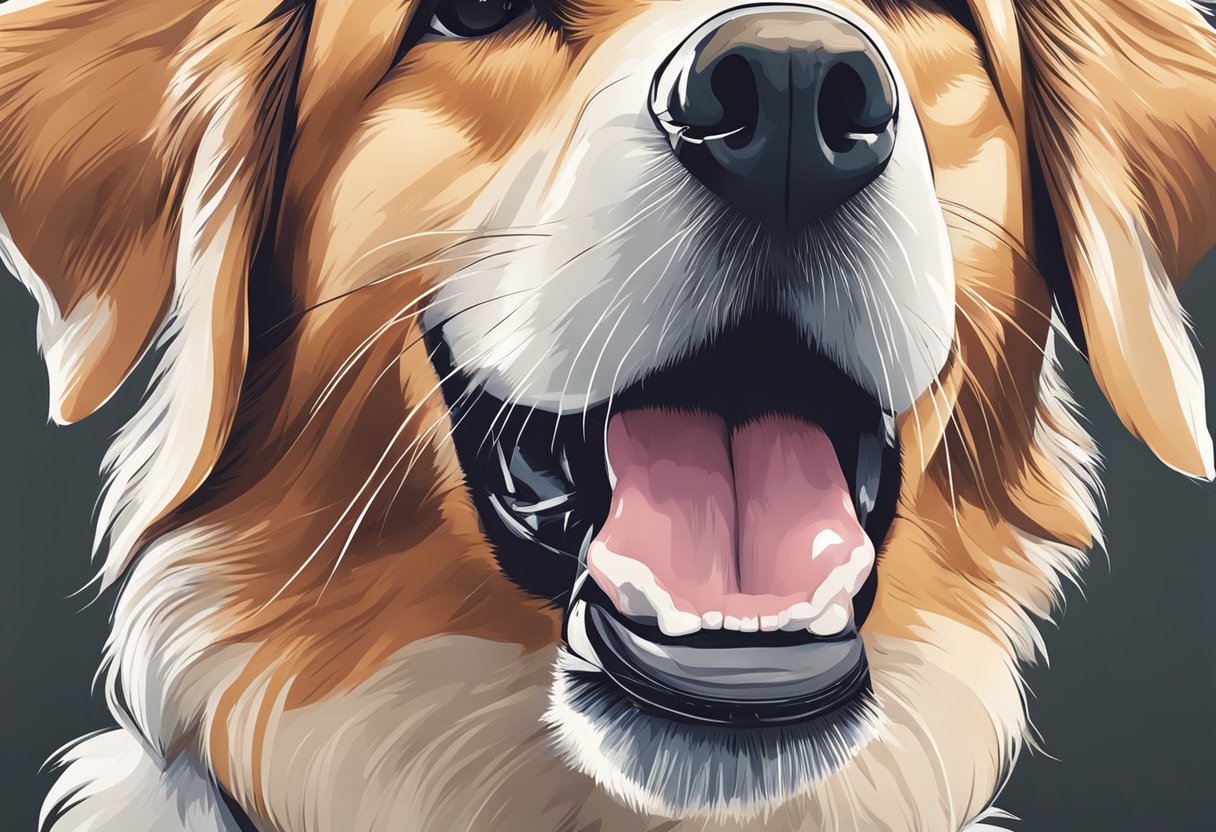
Anatomically, the ridges help to contain saliva and food, reducing spillage and aiding in the delicate process of ingestion. Beyond the practical aspects related to food and water, these ridges have evolved to assist dogs with gripping objects they hold with their mouths and also serve protective purposes, cushioning the lips against their own sharp teeth during vigorous chewing or play. These anatomical structures exhibit the complex interplay between form and function within canine physiology, highlighting the evolutionary adaptations that dogs have undergone in relation to their varied behaviors and lifestyles.
Key Takeaways
- Ridges on a dog’s lips serve multiple functions, including containment of food and saliva.
- These features aid dogs in gripping objects and protect their mouths during intense activities.
- An understanding of lip ridges reflects the broader evolutionary adaptations of canines.
Canine Anatomy and Physiology
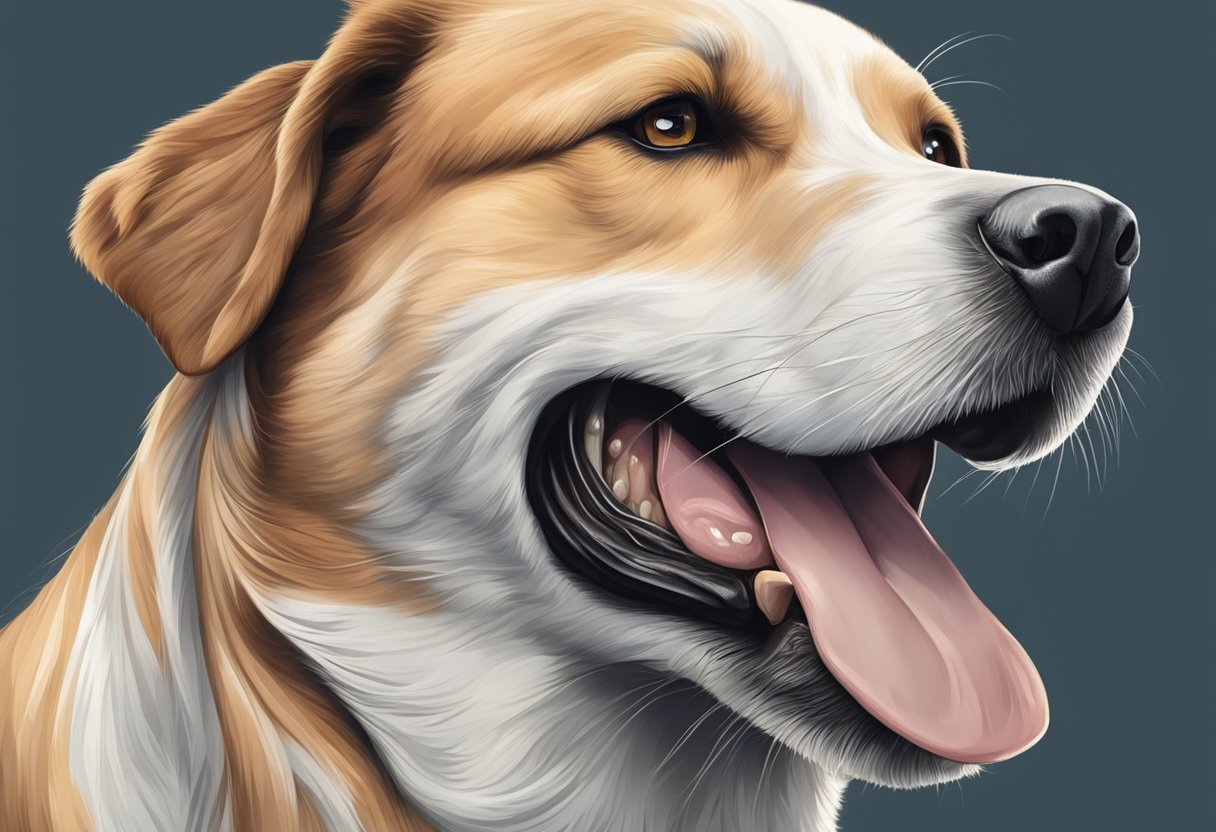
In this section, we explore the intricacies of a dog’s oral anatomy and the multifunctional role of the lips, which are highly adapted features suited for diverse tasks, from hunting to temperature regulation.
Overview of Dog Mouth Structure
A dog’s mouth is a composite structure that includes not only the visible lips but also the teeth, tongue, gums, and the inner oral structure. The lips themselves, while often overlooked, play a critical role in the overall health and functionality of the mouth.
The Role of Ridges on Dog Lips
The ridges on their lips serve multiple purposes, including protection against injuries from their sharp teeth during intense activities like chewing. Additionally, these ridges may improve a dog’s grip when holding objects and enhance their tactile environment sensing abilities.
Lip Functions Beyond Ridges
Beyond the ridges, dogs’ lips aid in their complex sense of smell by helping to funnel scents towards the nose. They also assist with food intake by helping to keep morsels within the mouth while chewing, and play a part in drinking by allowing dogs to lap up water effectively.
Adaptations for Hunting and Eating
Dogs’ lips, in conjunction with their teeth and jaws, are adapted for hunting and eating. Their lips help securely grip and handle prey, while their teeth are designed to cut and break down food. The mouth’s overall design facilitates an effective process for ingesting food, which is crucial for their survival.
Temperature and Moisture Regulation
A dog’s mouth, including its lips, is crucial for regulating temperature and moisture levels. Increased surface area provided by the lips can aid in dissipating heat. Moreover, when dogs pant, moisture evaporates from the mouth, helping to lower their body temperature.
Health and Wellness
The health of a dog’s mouth, including the condition of its lips, is of significant importance. Issues like lip fold dermatitis and oral papillomas can affect dogs, making the ridges of their lips an area of focus for both grooming and medical observation.
Common Health Issues Related to Lips
Lip Fold Dermatitis: This condition often affects dogs with pronounced lip ridges, where moisture and bacteria can accumulate, leading to inflammation and infection. Regular cleaning is crucial to prevent this health issue.
Oral Papillomas: Caused by a virus, these wart-like growths typically occur on a dog’s lips and mouth area. Although often benign, veterinary attention is necessary for diagnosis and possible removal.
Signs of a Healthy Mouth
Teeth and Gums: A dog’s mouth is healthy when their teeth are free of plaque and tartar, and their gums show no signs of irritation or redness. The absence of a foul odor can also be an indicator of good oral health.
Lip Appearance: Healthy lips should have a smooth appearance, without cracks, wounds, or signs of infection.
Veterinary Care and Preventative Measures
Dental Hygiene: A veterinarian can provide guidance on maintaining dental hygiene for dogs, including regular tooth brushing and the use of specific diets or teeth-cleaning treats.
Regular Check-ups: Scheduled veterinary visits are vital for early detection and treatment of any dental or lip-related issues, including a close examination of the ridges along the lips.
First Aid for Lip Injuries
Minor Injuries: For small cuts on a dog’s lips, clean the wound with a saline solution and apply an antibacterial ointment. Prevent the dog from licking the site to ensure proper healing.
Immediate Care: If a dog sustains a serious lip injury, they should be taken to a veterinarian as soon as possible for professional wound care and to minimize the risk of infections.
Behavioral and Communication Aspects
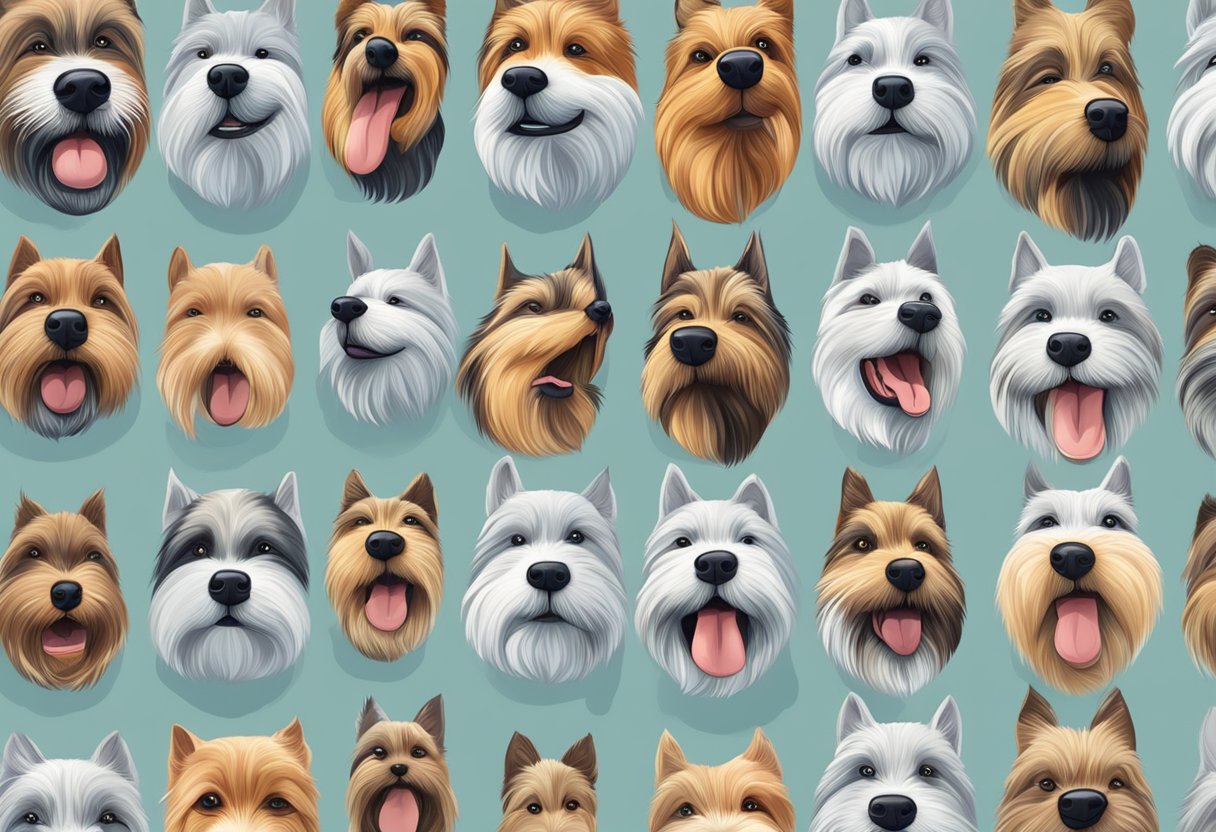
Understanding the role of ridges on dogs’ lips requires an examination of their behavior and communication methods. These physical features are integral in conveying emotions, interacting with objects, and facilitating social connections among dogs.
Facial Expressions and Emotions
Dogs are adept at using their facial expressions to communicate emotion. The ridges on their lips may enhance their ability to display aggression, fear, or pleasure by exaggerating the movements of the lips. For instance, when a dog bears its teeth, it is often a sign of aggression, and the ridges make this warning more pronounced to other animals and humans.
Dogs’ Interaction with Objects and Food
While eating or playing with toys, the ridges help dogs keep a firm grip on food particles and objects. This ensures better manipulation and control, reducing the chance of food spillage and enhancing the overall eating experience. Such functionality is important for obtaining nutrition and engaging with their environment effectively.
Significance in Social Interaction
These lip ridges also play a crucial role in social interaction and communal behavior among dogs. They contribute to a range of communicating behaviors, from gentle play to establishing a social hierarchy. In essence, the ridges augment the tactile sensations during social interactions, which can influence a dog’s response and interaction with fellow canines.
Comparison with Other Species
When examining the ridges on dog lips, it’s important to compare them with the anatomical features of humans and other animals. This comparison highlights the functional adaptations that canines have developed over time. The presence of ridges, or a lack thereof, greatly influences the way different species interact with their environment and process food.
Dogs Versus Humans
In humans, the lip structure is smooth, with no comparable ridges to those found in dogs. This anatomical difference is primarily because human lips have evolved to serve different functions, related to speech and expression, rather than the more survival-driven purposes of canine lips. Human anatomy showcases a clear distinction in oral features when compared to canine counterparts, lacking the textural adaptations needed for certain aspects of foraging and consumption.
Dogs Versus Other Animals
Dogs are members of the Carnivora order, a classification they share with other mammals, including cats. While both dogs and cats have fur-covered skin and carnivorous tendencies, their lip ridges differ. Cats typically have less pronounced lip ridges compared to dogs. This may relate to the different hunting and feeding strategies between the species. Bulldogs, terriers, and other breeds may exhibit more pronounced ridges due to their historic roles in gripping and holding, a trait less integral to feline behavior.
Breed-Specific Lip Features
The variation in lip ridges among dog breeds illustrates how breed traits influence their form and function. Golden Retrievers, known for their gentle grip, have less prominent ridges, facilitating a softer hold on game. Conversely, greyhounds might not rely as much on lip texture for their predatory needs, given their speed-driven hunting tactics. The breed-specific lip features reflect the unique evolutionary paths taken by each breed, shaping their interaction with the world.
Evolutionary Perspective

From an evolutionary standpoint, the presence of ridges on a dog’s lips is a distinctive adaptation that serves distinct functions, which, over time, have contributed to their survival and daily functioning.
Evolutionary Purpose of Ridged Lips
Ridged lips in dogs are considered an evolutionary adaptation that may have developed for several reasons. They serve as a protective barrier to shield the mouth from injuries and prevent food and water from spilling during consumption. These ridges are integral to canine anatomy, facilitating a range of activities from eating to vocalization.
The Development of Facial Features
Over time, the head shape, ears, and snouts of dogs have evolved to suit their environment and behavior. The ridges on their lips fit into this broader context of facial evolution, where every feature has adapted for an advantageous purpose. The development of facial features in canines has been a slow but steady process aimed at enhancing sensory abilities and survival.
Survival Benefits of Mouth Adaptations
The adaptation of ridged lips contributes to survival by enabling dogs to hold objects securely and prevent potential danger from harming the sensitive parts of their mouths. Such features might have helped early canines in hunting and foraging, where a firm grip and protective mechanisms against sharp objects were essential for survival.
Care and Maintenance
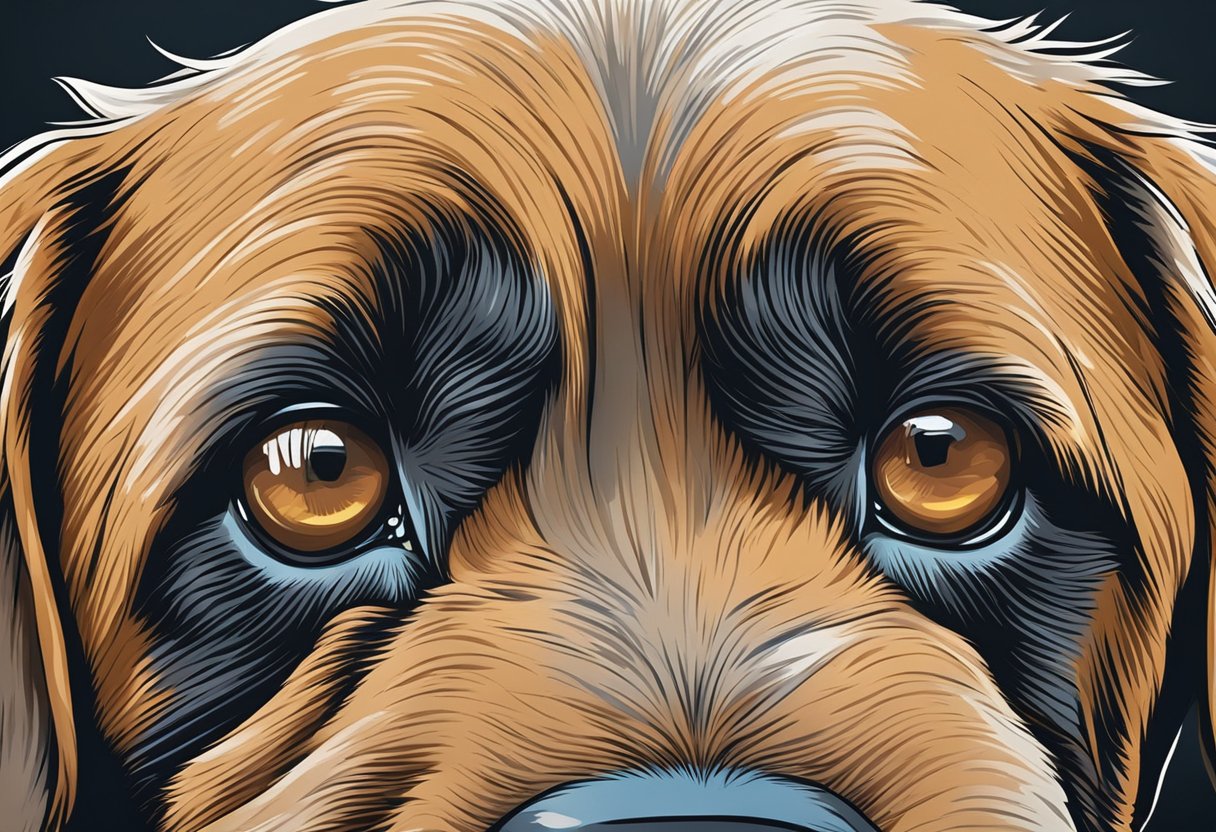
Proper care and maintenance of a dog’s lips are crucial in preserving their overall oral health. Attention to daily grooming, protection from environmental factors, and appropriate feeding practices play significant roles in maintaining the health of their ridged lips.
Daily Grooming Practices
Regular grooming is essential for keeping a dog’s lips clean and healthy. Owners should gently wipe their dog’s lips with a soft, damp cloth to remove food particles and debris. This simple yet effective routine minimizes the accumulation of dirt and helps prevent infections. Additionally, during grooming sessions, one should look for any signs of chapped lips or unusual growths and consult a veterinarian if such issues are spotted.
Protecting Lips from Environmental Factors
Dogs’ lips can be sensitive to extreme weather conditions. In cold climates, applying a pet-safe balm can prevent their lips from becoming chapped. During sunny days, particularly for dogs with less pigmented lips, using a sunscreen made specifically for canines can help avoid sunburn. Always provide plenty of water to drink, ensuring dogs stay hydrated, which is vital for lip health, especially in hot or dry environments.
Feeding Practices and Oral Health
The diets of dogs have an indirect impact on the health of their lips. Foods that support good oral health will benefit the lips as well. Opting for balanced nutrition with appropriate levels of vitamins and minerals contributes to their overall wellbeing. It’s important to keep their feeding area and bowls clean, to reduce the risk of bacterial growth that could affect their lips’ health. After eating, it’s advisable to encourage the dog to drink water, which can help rinse away food particles from the lips and mouth.
Maintaining regular veterinary check-ups will ensure that any issues concerning a dog’s lips are addressed promptly, preserving the animal’s health and wellbeing.
Other Considerations
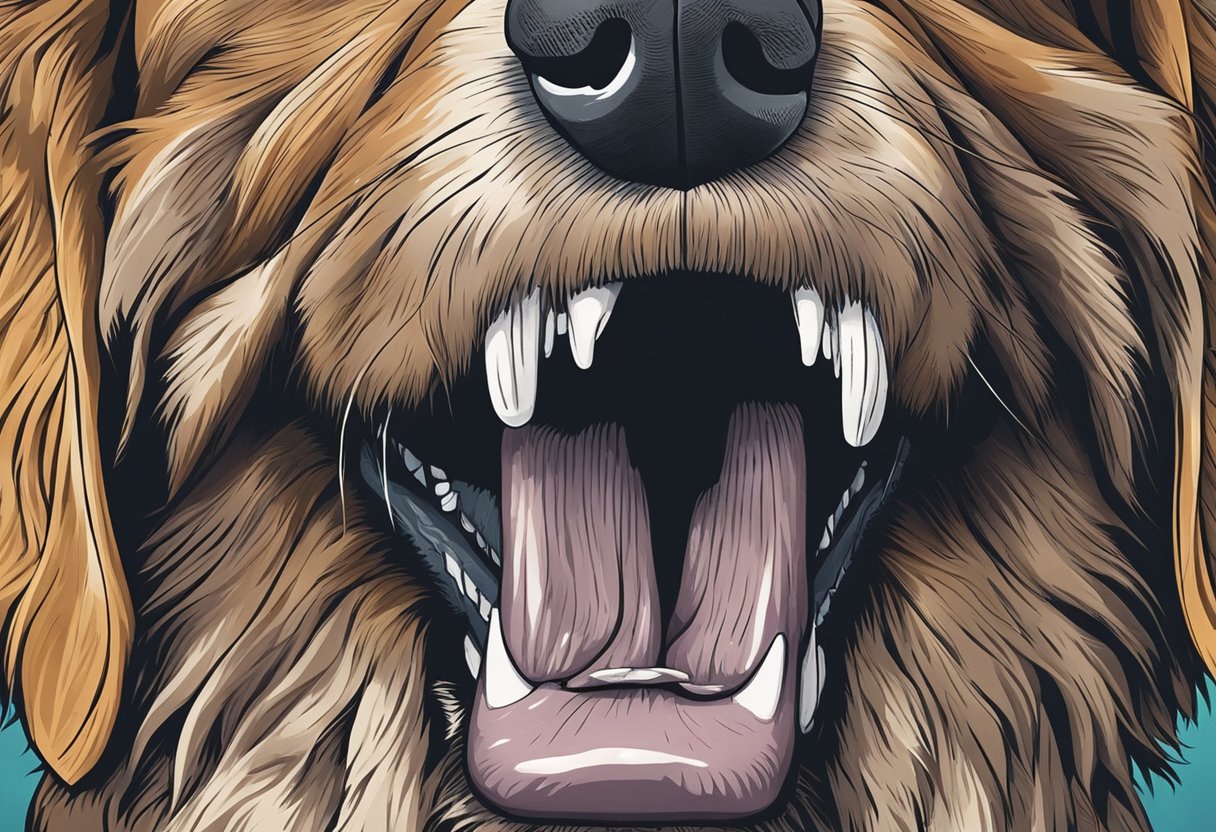
When exploring the distinct ridges on a dog’s lips, it’s essential to consider genetic variability, behavioral theories, and the implications for dog owners. The ridges are not merely aesthetic; they are a result of complex genetic factors and serve various functional purposes across different breeds.
Genetic Variability and Lip Traits
Breed differences play a significant role in the appearance and structure of a dog’s lips. Some breeds may exhibit more pronounced ridges due to their genetic factors, while others have smoother lip contours. For instance, dogs bred for water retrieval possess more prominent lip ridges to assist in carrying objects without letting water into their mouths.
Lip-Related Behavioral Theories
Behavioral research has posited theories linking lip traits to dog behavior. Ridges could enhance a dog’s ability to communicate through subtle movements, impacting their interaction with both humans and other dogs. While concrete evidence is still forthcoming, these theories provide a fascinating glimpse into the potential behavioral significance of fur and ridges on a dog’s lips.
Owning a Dog with Special Lip Features
For the pet parent, understanding a dog’s lip features can inform care requirements. Dogs with pronounced ridges might have special needs when it comes to grooming, as debris and moisture can accumulate in the fur around their lips. Awareness and regular cleaning are key to preventing infection and maintaining the overall health of their pet.
Frequently Asked Questions

Understanding the function and importance of the ridges on a dog’s lips can shed light on their intricate oral biology and its impact on their day-to-day activities.
What purpose do the ridges in a dog’s lips serve?
The ridges, or commissures, help to keep food and water inside their mouths during consumption. They play an essential role in preventing spills and aiding in the dog’s eating process.
How do the serrated edges on a dog’s lips benefit them?
These serrated edges, known as ruga or rugal folds, allow dogs to grip their food better. This feature assists in moving the food to the back of the mouth for efficient chewing and swallowing.
Can the presence of ridges in a dog’s mouth indicate health issues?
While the ridges are a normal part of a dog’s mouth anatomy, any notable changes in their appearance could be indicative of health issues. Owners should watch for any alterations or inflammation that might suggest a problem.
What is the significance of a dog’s lip patterns and texture?
The patterns and texture of a dog’s lips can enhance their sense of touch and help protect them when exploring or playing. The ridges may increase sensitivity, allowing a dog to better detect environmental stimuli.
How does the anatomy of a dog’s lip affect its feeding habits?
The lip anatomy is designed to facilitate feeding. The stricture of the ridges helps to control the flow of food and water, enabling dogs to eat and drink effectively without creating a mess.
Are swollen or sore lips in dogs related to the ridges, and how can they be treated?
Swollen or sore lips in dogs might occasionally be linked to the ridged structure, due to injury or irritation. Treatment should begin with a consultation with a veterinarian to determine the underlying cause and appropriate care.
